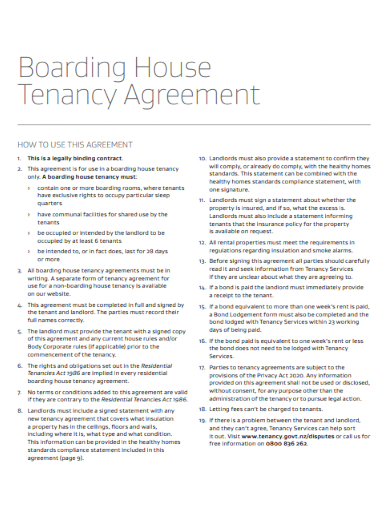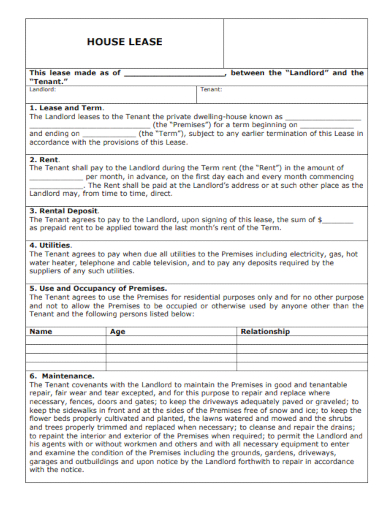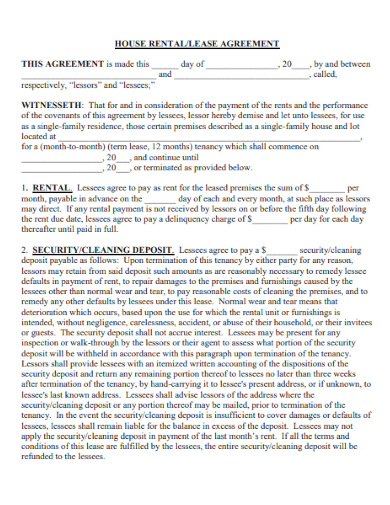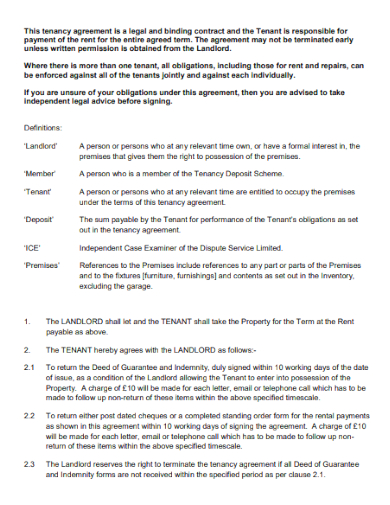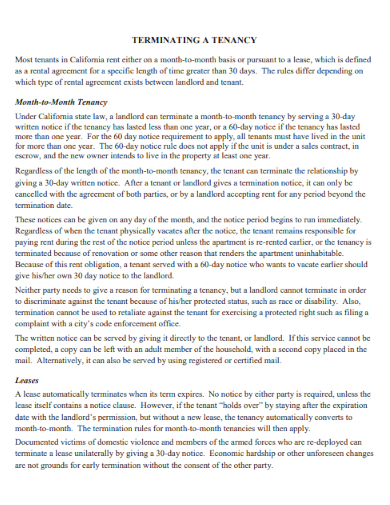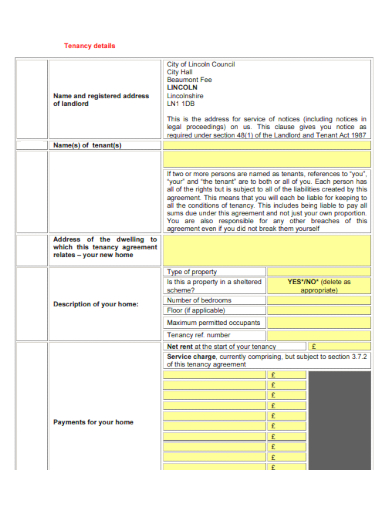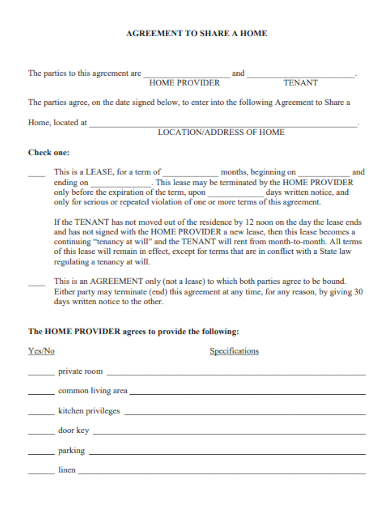Tenants in a boarding house have their own boarding house tenancy agreement with their landlord to rent a single room or a sleeping area within a shared room. They also share common areas such as the kitchen and bathroom. A standard tenancy is one in which one or more tenants sign a tenancy agreement to rent the entire property. A boarding house has at least six tenants or is intended to have at least six tenants.
10+ House Tenancy Agreement
It’s possible that the property you want to buy is currently occupied by tenants, whether you’re looking for a primary residence or an investment property. If that’s the case, there are a few things you should think about before proceeding with the purchase.
1. House Tenancy Agreement Template
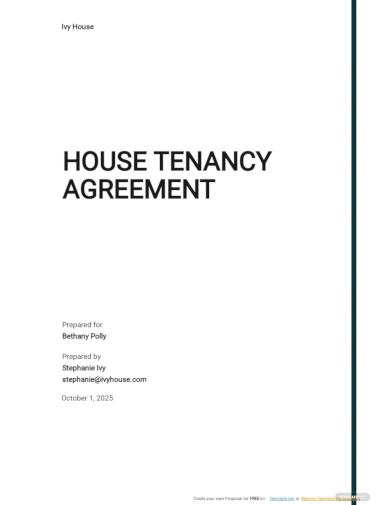
2. Boarding House Tenancy Agreement
3. House Lease Tenancy Agreement
4. Residential House Tenancy Agreement
5. House Rental Tenancy Agreement
6. Sample House Tenancy Agreement
7. House Tenancy Terminating Agreement
8. House Tenancy Landlord Agreement
9. House Shorthold Tenancy Agreement
10. Housing and Community Tenancy Agreement
11. Agreement to Share a Home Tenancy
Introductory Tenancy
An introductory tenancy may be offered to new council tenants. These are similar to a “trial” period and usually last 12 months.
Unless your council has one of the following, you will automatically become a secure or flexible tenant after 12 months:
- started eviction proceedings against you
- Your introductory tenancy has been extended for another 6 months.
There are some restrictions on what you can do with an introductory tenancy, such as:
- make significant enhancements to the property
- Exchange your home with a council tenant.
- Use the Right to Buy scheme to purchase your home.
Secure Tenancy
As a secure tenant, you can typically stay in the property for the rest of your life if you do not violate the tenancy’s terms.
You can do the following:
- You can sublet rooms, but not the entire property.
- Right to Buy is a program that allows you to purchase a home.
- With your council’s permission, you can swap your home with another council or housing association tenant.
- In some cases, you may be able to transfer your tenancy to someone else.
- Make improvements to your home – some types of work will require council approval.
Flexible Tenancy
You have a fixed-term tenancy as a flexible tenant. This is usually for at least 5 years, though it can be anywhere between 2 and 5 years in some cases.
The council may decide at the end of the fixed period to:
- provide you with a new fixed-term tenancy
- provide you with a safe tenancy
- not renewing your lease
If they decide not to renew your tenancy, they must explain why and give you the opportunity to appeal the decision.
As a flexible tenant, you have the following options:
- You can sublet rooms, but not the entire property.
- Right to Buy is a program that allows you to purchase a home.
- With your council’s permission, you can swap your home with another council or housing association tenant.
someone else to take over your tenancy
Joint Tenancy
All tenants in a joint tenancy share equal responsibility.
If you’re married or in a registered civil partnership, you can apply for a joint tenancy at any time. If you’re a cohabiting couple or related to one, you must have lived together at the property for at least 12 months (like brother and sister).
FAQs
What is a tenancy agreement?
Tenancy agreements are agreements between a tenant and a landlord (s). All tenancy agreements must be in writing and contain certain details. Furthermore, all new tenancy agreements must include additional statements that landlords must sign and attach.
How do you terminate or change a lease?
In general, if the tenant has a month-to-month lease, you (as the new landlord) can terminate the tenancy or increase the rent before the beginning of the next month, as long as you give the proper notice (typically 30 days, but this varies by state and by the number of months the tenant has occupied the property). However, if a fixed-term lease (e.g., six or twelve months) is in place, the tenant has the legal right (in most cases) to occupy the home for the duration of the lease, regardless of who owns the property.
Reviewing tenancy documents before closing ensures that you understand what you’re getting into and that the lease is well-written and structured to comply with local rental laws. If anything seems off, make it a condition of your closing that the seller corrects the language. It’s also crucial to obtain not only the records for any prepaid rent or security deposits but also the funds (it should be transferred to you on the closing statement). Depending on your state, you may be required to keep the security deposit in a trust account, and the closing agent should prorate the current rent payment between you and the seller.
Related Posts
Sample Business Agreement between Two Parties
FREE 10+ Trial Agreement Samples In MS Word | Google Docs | Apple Pages | PDF
FREE 10+ Charter Agreement Samples In MS Word | Google Docs | Apple Pages | PDF
FREE 10+ Mentoring Agreement Samples In MS Word | Apple Pages | PDF
FREE 10+ Partner Agreement Samples In MS Word | Google Docs | Apple Pages | PDF
FREE 10+ Individual Agreement Samples In MS Word | Google Docs | Apple Pages | PDF
FREE 10+ Strategic Agreement Samples In MS Word | Google Docs | Apple Pages | PDF
FREE 10+ Producer Agreement Samples in MS Word | Apple Pages | PDF
FREE 10+ Grant Agreement Samples In MS Word | Apple Pages | PDF
FREE 8+ Meeting Agreement Samples in MS Word | Google Docs | Apple Pages | PDF
FREE 10+ Community Agreement Samples In MS Word | Google Docs | PDF
FREE 8+ Real Estate Option Agreement Samples in MS Word | PDF
FREE 10+ Call Option Agreement Samples In MS Word | PDF
FREE 10+ Advertising Agreement Samples In MS Word | Google Docs | Apple Pages | PDF
FREE 10+ Car Agreement Samples In MS Word | Google Docs | Apple Pages | PDF

